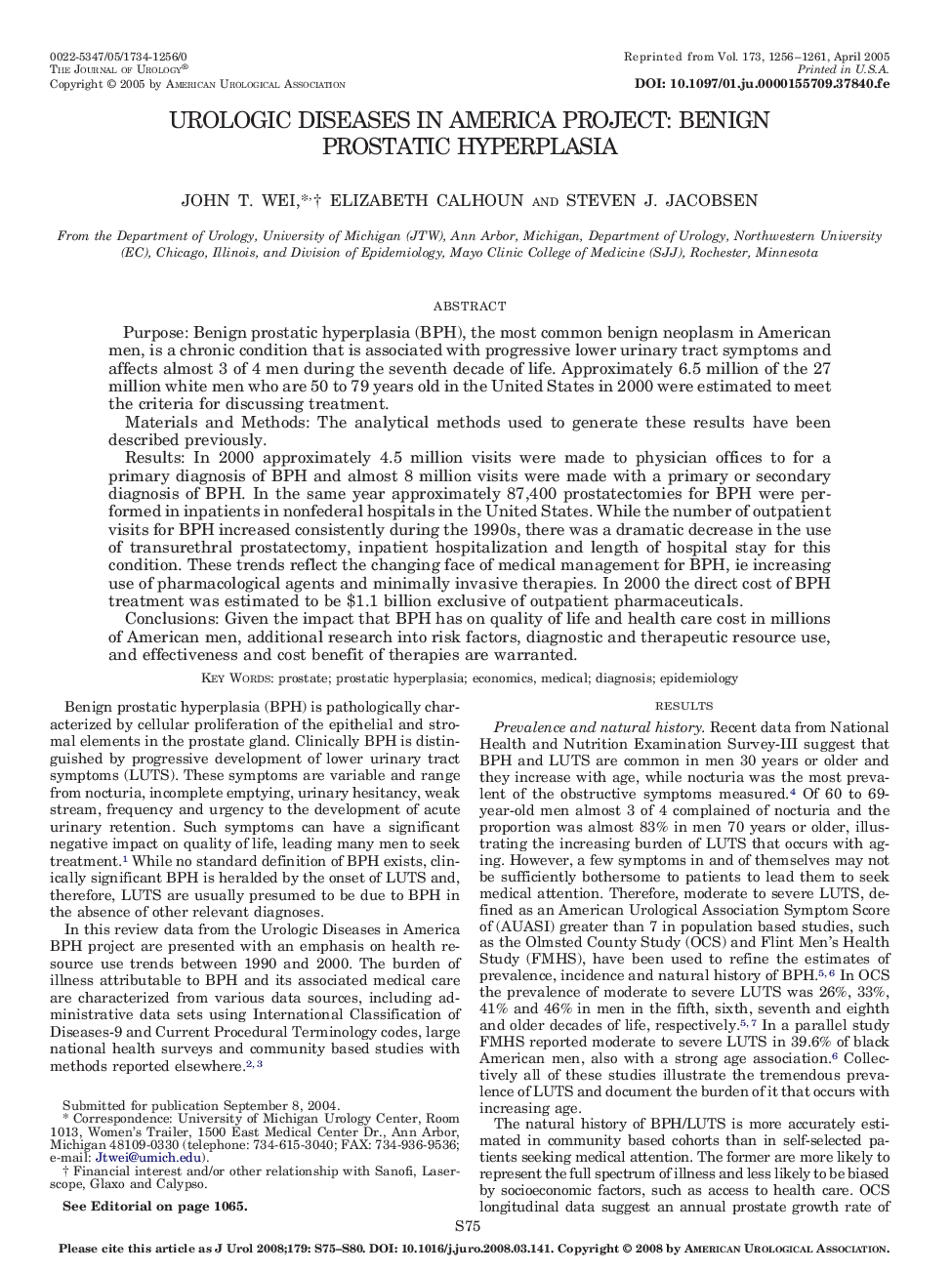| Article ID | Journal | Published Year | Pages | File Type |
|---|---|---|---|---|
| 3872761 | The Journal of Urology | 2008 | 6 Pages |
PurposeBenign prostatic hyperplasia (BPH), the most common benign neoplasm in American men, is a chronic condition that is associated with progressive lower urinary tract symptoms and affects almost 3 of 4 men during the seventh decade of life. Approximately 6.5 million of the 27 million white men who are 50 to 79 years old in the United States in 2000 were estimated to meet the criteria for discussing treatment.Materials and MethodsThe analytical methods used to generate these results have been described previously.ResultsIn 2000 approximately 4.5 million visits were made to physician offices to for a primary diagnosis of BPH and almost 8 million visits were made with a primary or secondary diagnosis of BPH. In the same year approximately 87,400 prostatectomies for BPH were performed in inpatients in nonfederal hospitals in the United States. While the number of outpatient visits for BPH increased consistently during the 1990s, there was a dramatic decrease in the use of transurethral prostatectomy, inpatient hospitalization and length of hospital stay for this condition. These trends reflect the changing face of medical management for BPH, ie increasing use of pharmacological agents and minimally invasive therapies. In 2000 the direct cost of BPH treatment was estimated to be $1.1 billion exclusive of outpatient pharmaceuticals.ConclusionsGiven the impact that BPH has on quality of life and health care cost in millions of American men, additional research into risk factors, diagnostic and therapeutic resource use, and effectiveness and cost benefit of therapies are warranted.
